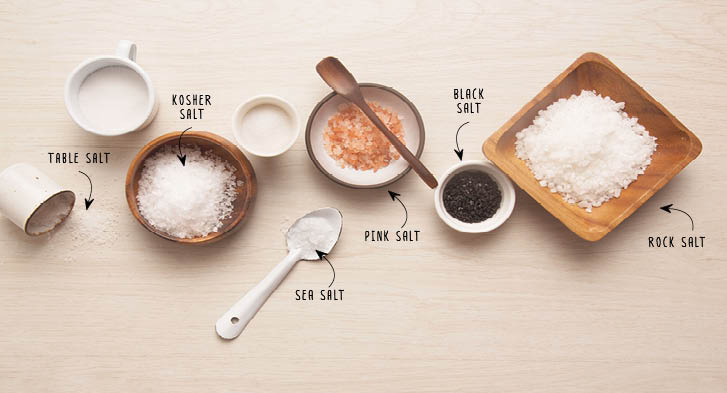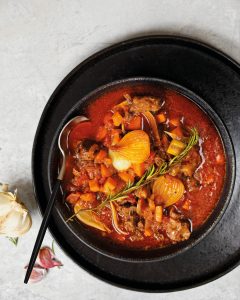Table salt
Most people know this as ‘normal’ salt. In SA, table salt is enriched with iodine for healthy brain development and thyroid function.
Best for general cooking and baking
Kosher salt
Coarse salt, traditionally used for koshering meat (by absorbing the blood), is normal salt that has been less finely ground.
Best for curing meat and preserving or pickling veggies
Sea salt
Traditionally harvested from evaporated seawater in salt pans, it is increasingly processed in factories.
Best for light dishes and seafood – it adds a subtle briny flavour
Pink salt
This attractive rock salt is mined in a specific area of the Himalayas. Its colour comes from iron oxide.
Best for its pretty appearance – serve in pinch bowls on your dinner table
Black salt
Kala namak or Himalayan black salt starts off as pink salt. It is traditionally processed using charcoal, along with herbs and spices, all of which contribute to its dark appearance. Traces of iron and sulphides give it a distinctive taste. Hawaiian lava salt is blended with coconut-shell charcoal for its apparent health benefits.
Best for its striking presentation – sprinkle on salads or pale roast veggies for a dramatic contrast
Rock salt
This is mined from the earth, where deposits of ancient seabeds still linger. Make sure it’s labelled ‘food grade’ – unpurified rock salt is used for softening water, melting road ice and making ice cream in a bag.
Best for sprinkling on finished dishes
How much salt is too much?
The recommended daily allowance (RDA) for sodium is 5g (about 1 tsp). Any more puts you at risk of hypertension. Salt is added to almost all processed foods, including bread, cereal and even juice, so take this into account when calculating your intake. Instead, use herbs, spices, lemons and limes to flavour food.




